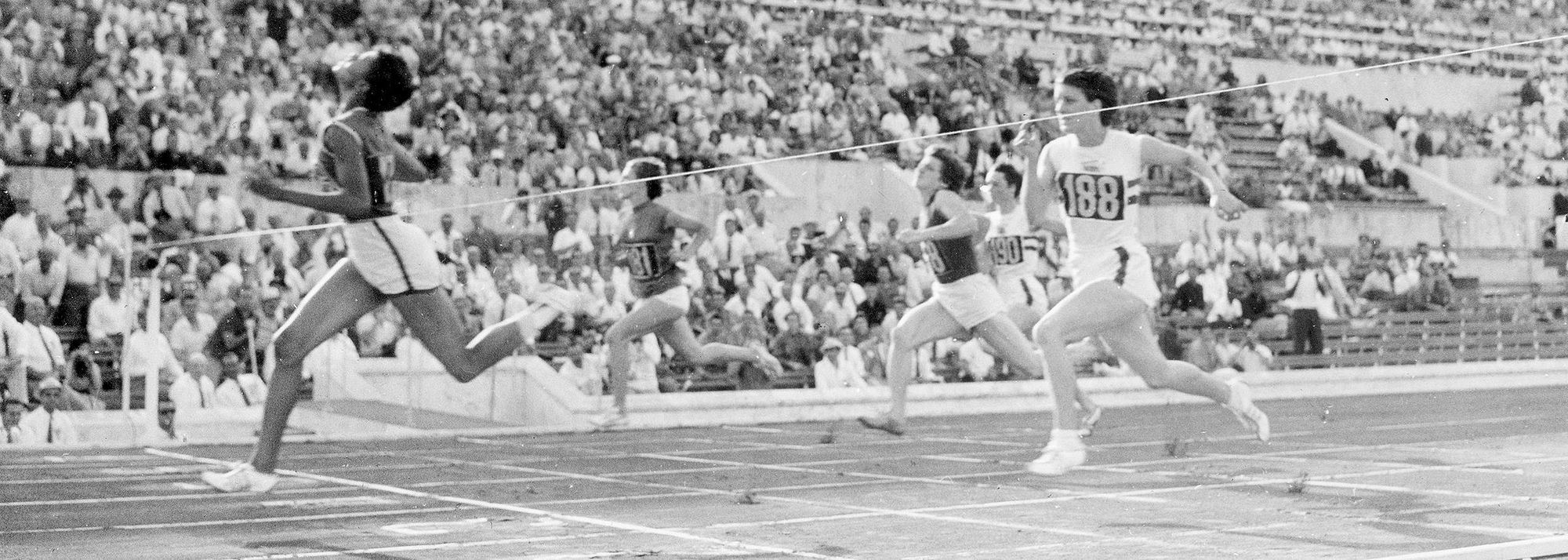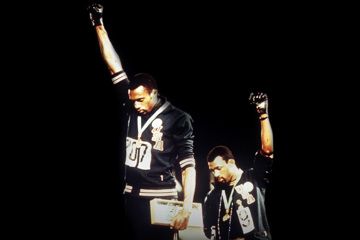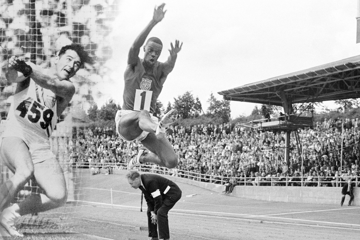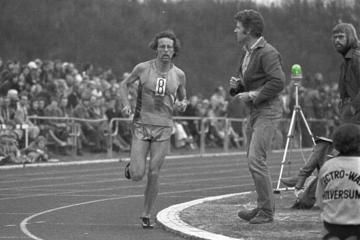Wilma Rudolph wins the 100m at the 1960 Olympic Games in Rome (© Getty Images)
In a sport where tales of triumph over adversity are not uncommon, Wilma Rudolph’s journey to sporting stardom stands out as one of the most astonishing.
In fact, her life story is reflected in her racing style: a sluggish start before finding her stride and then running into the record books.
The pinnacle of her athletics career – her golden triple at the Olympic Games in Rome – began with her 100m triumph on 2 September 1960, exactly 60 years ago today. But the odds had been stacked against Rudolph for almost all of her 20 years leading up to that moment.
Born prematurely as the 20th of 22 siblings, Rudolph suffered from pneumonia, scarlet fever and polio as a child, the latter of which left her physically disabled. Under the laws of segregation in the US at that time, Rudolph was unable to get treatment for her weakened leg at her local hospital, so each week Rudolph and her mother would make the 100-mile round trip by bus to Nashville where she was able to get treatment. That, along with home massages four times a day from family members and the use of orthotics, helped Rudolph to overcome the debilitating effects of polio, and at the age of nine she was finally able to walk without a leg brace.
“My doctor told me I would never walk again,” she once said. “My mother told me I would. I believed my mother.”
Feeling as though she had some making up to do, Rudolph immersed herself in sports and took up basketball and athletics at high school. She excelled at both, and at the age of 16 she qualified to represent the USA in the 200m and 4x100m at the 1956 Olympic Games in Melbourne. Rudolph missed making the 200m semifinals by one place, but two days later her Olympic experience ended on a high when she anchored the US team to a bronze medal in the 4x100m.
Rudolph became pregnant during her final year of high school, but she also continued to pursue her academic and sporting goals. She enrolled at Tennessee State University just a few weeks after her daughter, Yolanda, was born in 1958. Rudolph returned to action on the track one year later, winning the US 100m title along with Pan-American gold (4x100m) and silver (100m).
But it was at the 1960 Olympic Games in Rome where Rudolph hit the big time.
Her performances at that year’s US Olympic Trials, where she won the sprint double, and her 200m world record of 22.9 at the AAU Championships – becoming the first woman in history to break 23 seconds for the distance – had hinted that something special would be on the cards in the Italian capital.
Rudolph arrived in Rome in the form of her life, but fate nearly tripped her up again when she stepped in a hole near the practice track and twisted her ankle, just one day before her competition began. Despite that, she breezed through the heats and quarterfinals, clocking the fastest times in both rounds. Defending champion Betty Cuthbert, meanwhile, was hampered by a leg injury and didn’t make it beyond the quarterfinals.
The next day, 2 September, Rudolph lined up for her semifinal at 3:00pm and booked her spot in the Olympic final by charging to a world-record-equalling 11.3 (11.41 electric). The final was scheduled to take place just 80 minutes later, but Rudolph was so relaxed that she fell asleep on a massage table less than half an hour before the final.
She soon got back into race mode, though, and headed back out on to the track. As was her style, the long-limbed Rudolph wasn’t the fastest out of the blocks, but once she got into her stride there was simply no catching her.
Rudolph won by the considerable margin of 0.25, stopping the clock at 11.0 (11.18 electric) – a time that would have smashed the world record had it not been for the 2.8m/s following wind. She also became the first US woman in 24 years to win the Olympic 100m title, but she was only a third of a way to achieving her goal for the Games.
She was back in action the next day for the heats of the 200m and sped to an Olympic record of 23.30. Strong headwinds prevented her from going faster in the semifinal and final, but she went on to take the gold medal with an even bigger margin than in the shorter event.
“The farther I ran, the faster I became,” she said.
She capped her Rome campaign by taking a third gold medal in the 4x100m, having clocked a world record of 44.4 in the heats. Not only did she cement her status as the fastest woman in the world, she also became the first US woman to win three gold medals at a single Olympic Games.
“After the playing of ‘The Star-Spangled Banner’, I came away from the victory stand and I was mobbed,” she wrote in her autobiography. “People were jumping all over me, putting microphones into my face, pounding my back, and I couldn't believe it.”
With Rome being the first Olympics broadcast live to an international audience, Rudolph emerged from the Games as a global sporting star and one of the most highly visible black women in America, instantly becoming a role model for the next generation.
Still aged just 20 at the time, she used her newfound platform to great effect and, in her soft-spoken gracious manner, became a pioneer for civil rights and women’s rights.
When she returned from Rome, the governor of Tennessee had organised a segregated home-coming celebration, but Rudolph refused to attend. The plans for the celebration were then changed and Rudolph’s parade became the first integrated event in her hometown.
She continued competing internationally for two more years, and even set world records at 100m, 4x100m and 200 yards indoors, but she retired at the end of 1962. “If I won two gold medals (at the next Olympics), there would be something lacking,” she said at the time. “I'll stick with the glory I've already won, like Jesse Owens did in 1936.”
Her proudest achievement, though, came in 1981 when she set up the Wilma Rudolph Foundation. The non-profit organisation, based in Indiana, trains youth athletes and sends tutors to schools with books on American heroes.
“I tell them that the most important aspect is to be yourself and have confidence in yourself,” she said. “I remind them the triumph can't be had without the struggle.”
And Rudolph, who overcame numerous obstacles to become the fastest woman in the world, knows that all too well.
“’I can’t’ are two words that have never been in my vocabulary,” said Rudolph, who died from brain cancer in 1994 at the age of 54. “I believe in me more than anything in this world.”
Jon Mulkeen for World Athletics











